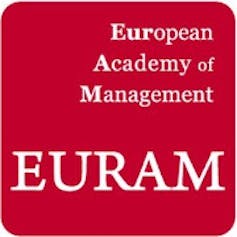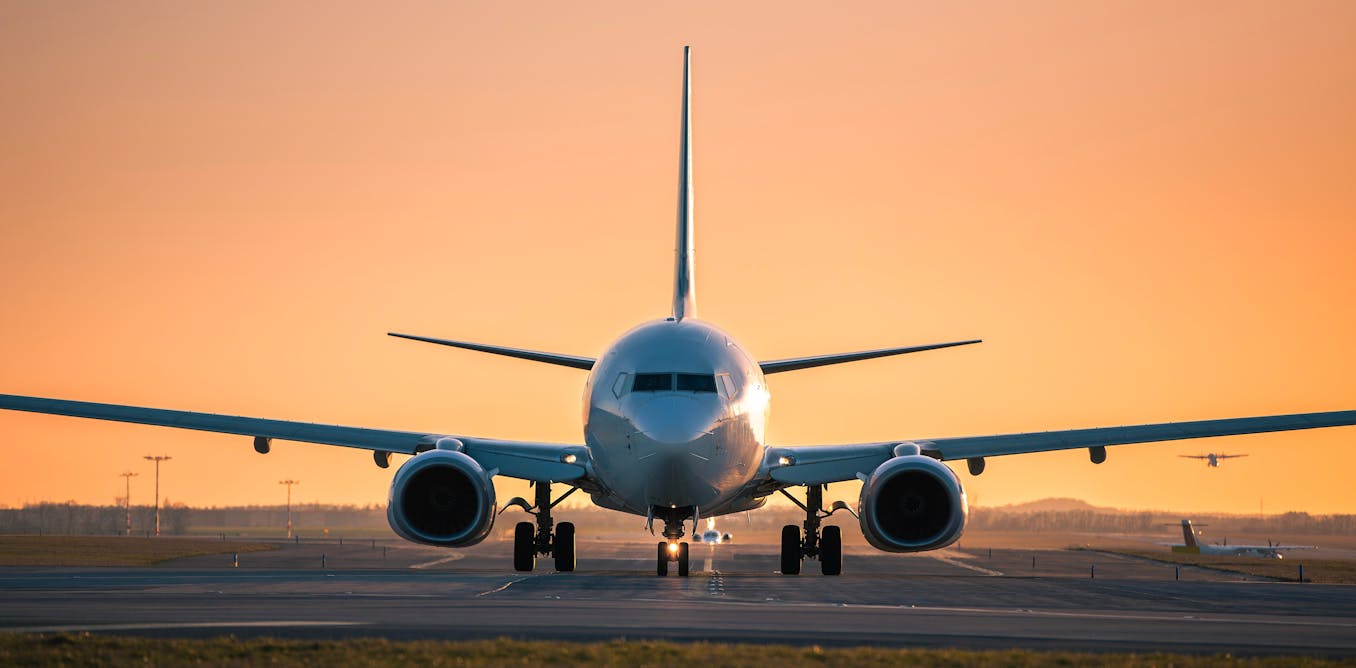Although air transport contributes a small proportion to global greenhouse gas emissions (approximately 3.5%), the expected growth in traffic compels the industry to minimize its environmental footprint. The European Commission aims to have carbon neutrality in 2050. To help reach this goal, the industry needs to change its practices.
However, making a greener aircraft is no small feat. No single company possesses all the required resources and expertise. There is a need to bring minds together to accomplish this task. Aircraft manufacturing competitors are best positioned to accomplish it.
A weekly e-mail in English featuring expertise from scholars and researchers. It provides an introduction to the diversity of research coming out of the continent and considers some of the key issues facing European countries. Get the newsletter!
Coopetition: a paradoxical relationship that can work
Cooperating with competitors is commonly referred to as coopetition. The concept is well recognized in strategic management and has been extensively studied since its popularization in the early 2000s by Swedish researchers Maria Bengtsson and Soren Kock.
Coopetition can bring greater benefits than pure cooperation or competition. Competitors hold complementary and compatible resources that facilitate knowledge sharing and cooperation. However, cooperating with rivals is not a natural instinct. In fact, it introduces greater risks, because firms that are fierce market competitors could be tempted to behave opportunistically. While cooperating to create a common pie, they are also competing for the biggest share of it.
Benefits and risks
While coopetition can yield greater benefits, such as faster innovation, than strategies focused solely on competition, it also introduces greater risks, especially when multiple competitors are involved. By increasing the number of competitors, firms may have access to more resources. However, there is also a higher risk of the pursuit of self-interest, with guile. With more companies involved, competitors may be tempted and find it easier to conceal attempts to acquire more than an agreed share of knowledge and resources.
So, what is the secret to successful collaboration with rivals? That is what we are trying to find out. Our study focuses on how companies can successfully manage multilateral coopetition on a large scale by examining the case of CleanAviation, an initiative consisting of eleven competitors including industry players like Airbus, Safran and Dassault, as well as the European Commission. Our study involved 34 semi-structured interviews with project managers and directors and a review of archival documents to understand how the competitors managed their cooperation.
CleanAviation: a case of multilateral coopetition
Since 2008, CleanAviation (originally CleanSky) has been at the forefront of developing innovations aimed at reducing environmental impacts. Its players are brought together in a governing board, which includes representatives of the founding members. They make decisions on the strategic management of CleanAviation by, for example, deciding on technological development priorities and how to achieve them.
The collaboration among the 11 manufacturers in the initiative allows for access to a broad array of resources, enhancing innovation. With over 100 key technologies and 30 prototypes developed, CleanAviation has made significant contributions to creating environmentally friendly European aircraft. One example is Airbus and Saab’s effort to develop the Smart Fixed Wing Aircraft, an advanced plane with wings that are designed to adapt to varying flight conditions, thus optimizing performance. The effort aims at reducing fuel consumption and emissions in future aircraft.
However, in our study, these companies reported difficulties in knowledge sharing that at times slowed the technology development process and created tensions. For example, while collaboration through knowledge sharing was necessary to ensure technological compatibility, due to uncertainty about how to collaborate safely, companies restricted their interactions and limited knowledge sharing by protecting important information.
Managing multilateral coopetition
Our analysis suggests that balancing these benefits and risks requires specific management approaches. We identified two critical levels: the governing board level and the operational level.
CleanAviation’s governing board strategizes about the management of the intiative. It drafted a joint technology roadmap to outline necessary technological advancements and implementation strategies. At this level, shared governance between the European Commission and the competitors, managed through rotating leadership, helps prevent power concentration and reduces tensions. Decisions within the board are made by consensus.
On the operational level, managing coopetition involves separating activities to compartmentalize daily knowledge sharing, ensuring each party’s contributions and benefits are protected. In our study, we found that even though the separation of activities was essential, connection and interaction through knowledge sharing was also needed. To help this effort, individuals called liaisons officers acted at the interfaces to push competing companies to cooperate. They helped manage the coopetitive paradox by acting as knowledge arbitrators between competitors when discrepancies occur.
Finally, our results also confirm the indispensability of implementing both contractual and relational governance mechanisms to deal with coopetition. Contractual governance refers to the use of contracts, documents and other reporting or knowledge-sharing guidelines; relational governance refers to social interaction among companies through the liaisons officers.
Large-scale projects with several competitors can help fight climate change
Thanks to these management approaches, the manufacturers have reported several successful green innovations. For example, the Open Rotor programme, created by Safran in partnership with Airbus and other companies, has developed a new aircraft engine that reduces fuel consumption and CO2 emissions by 20%, representing a significant cost reduction and environmental benefit.
As cooperation among competitors becomes more common, especially in tackling significant challenges like climate change, managing it will be crucial. The results of our study can apply to settings beyond the aircraft industry. The Covid-19 crisis has highlighted the need for firms to adopt more environmentally sustainable business practices, but achieving sustainability is a complex challenge that no company can tackle alone. That’s why companies need to join forces to find collective solutions.

The European Academy of Management (EURAM) is a learned society founded in 2001. With over 2,000 members from 60 countries in Europe and beyond, EURAM aims at advancing the academic discipline of management in Europe.



